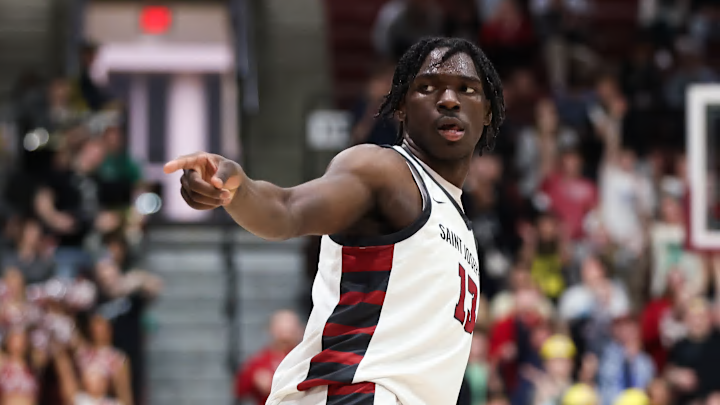The NBA Draft isn't quite what it used to be. No longer are prospects biting at the bit to enter the draft to earn life-changing money—that can be done at the collegiate level. The best NCAA hoopers are earning up to $4 million, and several will earn less in the NBA.
A total of 106 players initially declared for the NBA Draft as early-entry candidates. Throughout the pre-draft process, 50 of these candidates withdrew, leaving merely 59 early-entry candidates. Several probable draftees, including San Diego State's Miles Byrd, Florida's Alex Condon, Auburn's Tahaad Pettiford, Alabama's Labaron Philon, and UAB's Yaxel Lendeborg, all decided against remaining in the draft.
Due primarily to the ever-expanding earning potential of Name Image and Likeness (NIL), collegians are more willing than ever to play multiple seasons in the NCAA. As a result, the draft pool has shallowed, with far more upperclassmen becoming notable draft-worthy prospects as opposed to years past, where youth dominated the draft's entirety.
With the decimated early-entry pools comes a shift in how NBA teams will evaluate prospects. Accomplished three, four, and even five-year players are worth consideration, in both the first and the second round. Still, there remains a contempt when evaluating these older prospects. It's well-known that collegiate success doesn't always translate to the professional ranks.
NBA draft insider Jonathan Givony referred to this year's second round as the "shallowest…we've seen in a few years." Sure, that's debatable; it all depends on how you evaluate the older crop of prospects, but it's still a worthwhile, plausible observation following the mass exodus.
It's imperative the Bulls eye a draft-day trade to improve positioning
With that being said, the Chicago Bulls are in a pickle. Chicago's 45th overall pick isn't low enough to warrant an almost throwaway selection, nor is it high enough to add a rotation-ready talent. There's a steep talent drop-off post-40. The same argument can perhaps be made following the 35th pick. The early second round features some intriguing candidates, yet the latter half zigs and zags between elder statesmen and burgeoning international products.
Considering the state of the Bulls' roster, Vice President of Basketball Operations Artūras Karnišovas must nail the 2025 draft. Chicago is close to being competitive despite being reluctant to embrace a full-on rebuild. Therefore, trading up from the 45th pick to obtain a pick within the 30-to-35 range is consequential.
Several notable late-first/second-rounders should intrigue the Bulls' Front Office as plug-and-play prospects. Think St. Joseph's Rasheer Fleming, France's Noah Penda, Arkansas' Adou Thiero, Creighton's Ryan Kalkbrenner, and Stanford's Maxime Raynaud. All previously mentioned prospects possess an immediately translatable skill, such as spot-up shooting, perimeter defense, or shot-blocking.
If Chicago does stand pat, their options at 45 will undoubtedly be limited. Marquette's Kam Jones, Auburn's Johni Broome, and Wisconsin's John Tonje should be available. Nonetheless, these prospects are all 23 years or older, limiting their future value immensely, bringing us back to the draft-age debacle.
Are these veteran collegians worth a second-round pick? That we don't know, and won't know for several seasons. The ideal draft ideology still revolves around selecting a player who has yet to reach their peak. For now, it's best to aim for a well-regarded prospect, higher on your organization's draft board, which means trading up in the 2025 iteration.
